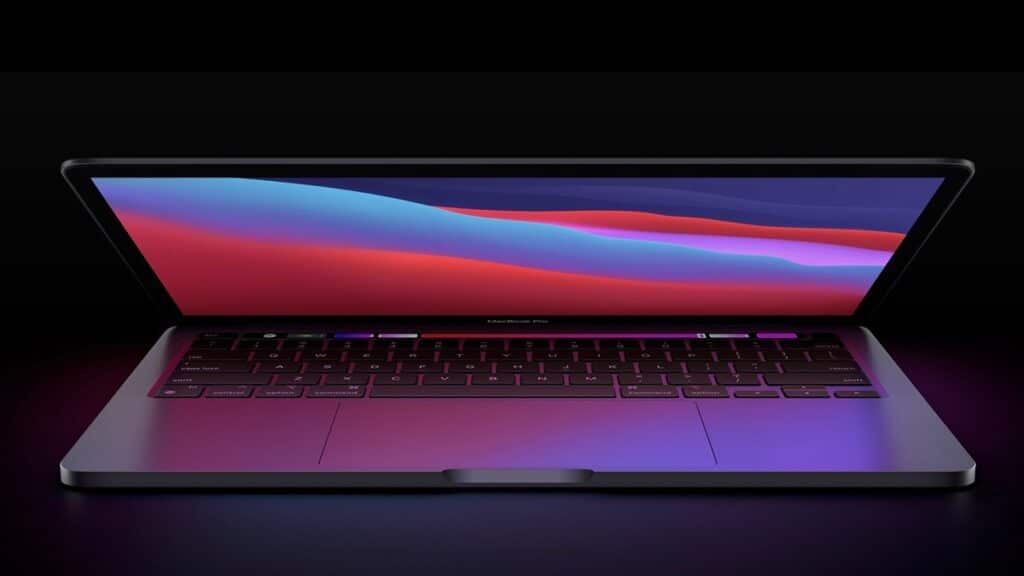Apple is facing a new class lawsuit in the United States that it accuses it of marketing falso O misleading for i MacBook Pro e MacBook Air powered by M1, fraudulent business practices, customer support misconduct and violation of consumer law. Let’s find out the details.
Apple’s case for the MacBook M1

The lawsuit represents Apple customers across the United States. Customers, according to the cause, have found hardware defects in their Apple MacBook Pro ed Air M1.
In recent months, a significant number of customers have reported that i display of their new silicone MacBooks Apple suddenly came cracked. Others however revealed that their displays showed horizontal black lines e vertical, making them unusable. As the lawsuit claims, these customers have revealed that the crepe e i malfunctions are caused by a hardware defect rather than by the user himself.
As it addresses these grievances, the lawsuit seeks to cast a greater shadow over “deceptive marketing” and the business practices “Fraudulent” from Apple. The lawsuit accuses the company of having falsely advertised 13-inch displays in the MacBook Pro and Air as “premium in quality, reliability and durability”.
Apple is accused in the lawsuit of intentionally misleading customers enhancing the quality of the displays in MacBook Pro and MacBook Air. According to the lawsuit, Apple has engaged in fraudulent business practices. The lawsuit points out that its “rigorous testing” of the displays, prior to their release, should have been make the alleged defect evident. Despite this, the company continued to release the product.
Despite this awareness, the company did not disclose anything and actively concealed the flaw of the screen from the public. It also went on to market and advertise laptops as cutting-edge products, premium e durable, when in reality this is not the case.
“To ensure durability, we evaluated the 13-inch MacBook Air in our Reliability Testing Lab. We used rigorous testing methods that simulate customer experiences,” the lawsuit cites Apple as further documentation that the company was aware of the defect. The company was “reckless” in its failure to identify weakness, note the cause.
While fraudulently and falsely marketing displays as “premium, reliable and durable”, the lawsuit accuses Apple of serious violation of consumer law. In particular, the lawsuit accuses Apple of violating consumer law refusing to repair displays for customers, even when they were in warranty.
According to the lawsuit, Apple refused to repair the displays under warranty as the company claimed the damage was caused by the user.
In some cases, leaving debris between the MacBook and its lid can cause damage. However, the lawsuit states that no customer had done that. Furthermore, the widespread nature of the defect further demonstrates that it is a manufacturing defect.
A vicious circle
The cause also highlights a valid point. For customers, regardless of whether the repairs were paid for out of pocket or not, thedisplay unit replaced would also be, in theory, defective. As a result, the lawsuit accuses Apple of further commercial misconduct.
The lawsuit accuses the company of putting users on an endless loop of defective displays, which leads to expensive repairsoni and then “equally defective replacements”.
As a result of Apple’s misconduct, customers were harmed and suffered actual damage. Customers have also supported, and will continue to support, costs e expenses not reimbursed related to the screen defect.
In its present form, the cause does not require damage O monetary compensation from Apple. Instead, it demands that Apple reverse its “False marketing” the quality and reliability of its MacBook displays, as described above. It is also asked to “correct, repair, replace or otherwise rectify [le sue] illegal, unjust, false and / or deceptive practices “.
The lawsuit granted to Apple 30 days, starting August 30, to address customers and the alleged defect of the screen. At the end of the 30 days, if Apple does nothing, the lawsuit will go ahead to seek damages from the company.
The specific amount of damages the lawsuit is seeking will be identified later in the process requested by the jury. However, the collective monetary damages of Apple customers who have experienced the aforementioned screen defect are more than 5 million dollars.
A spokesperson for the company refused to comment about the cause.















Leave a Reply
View Comments